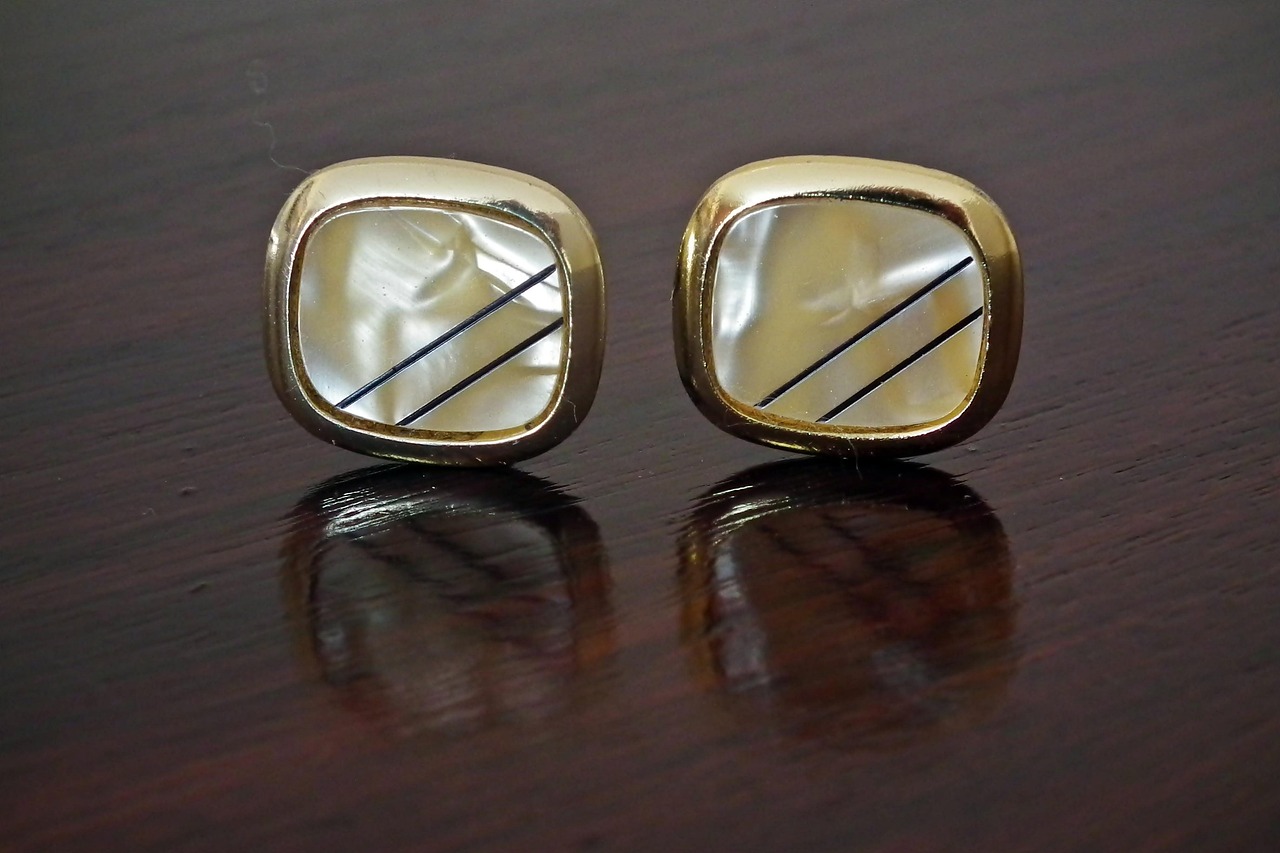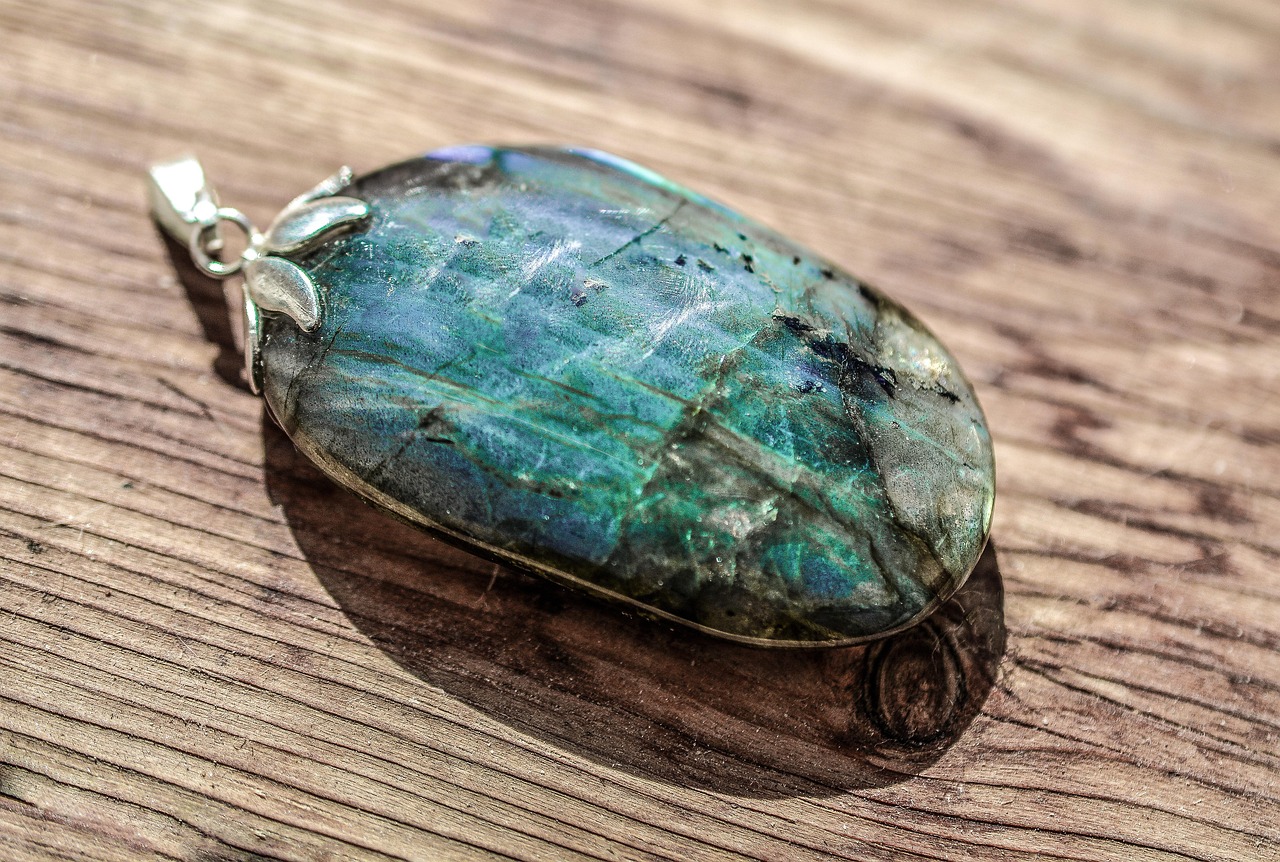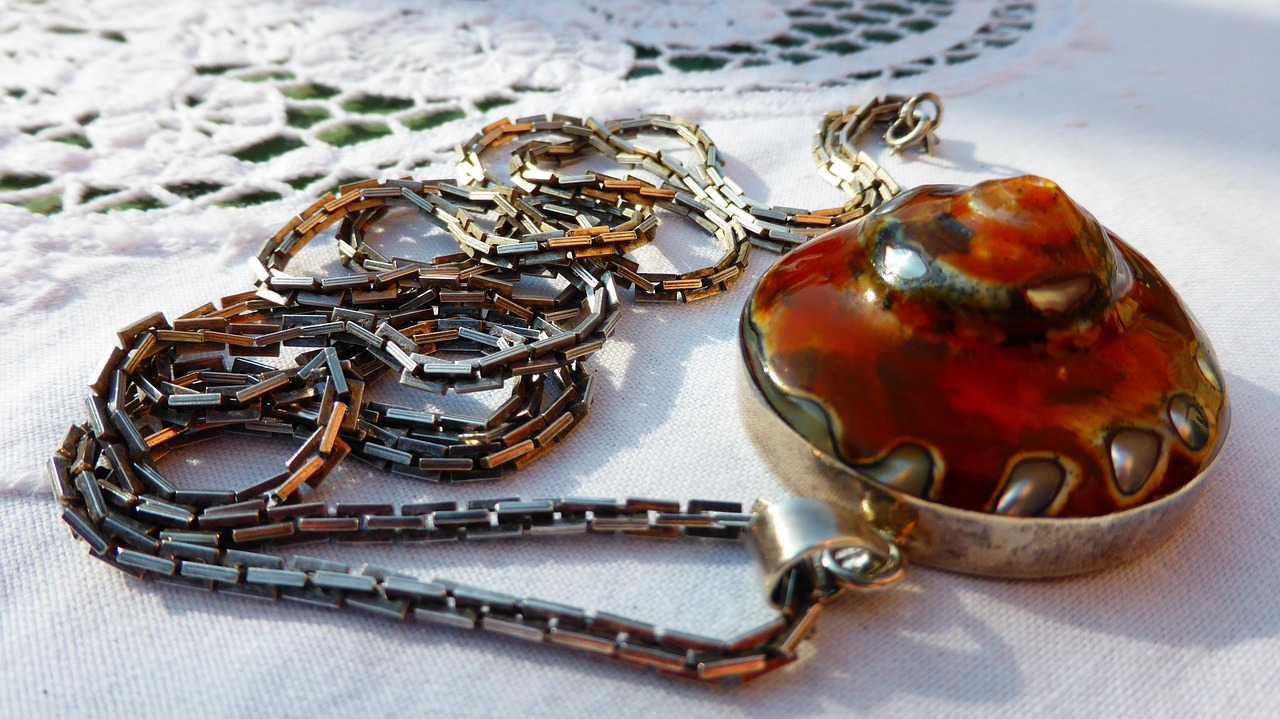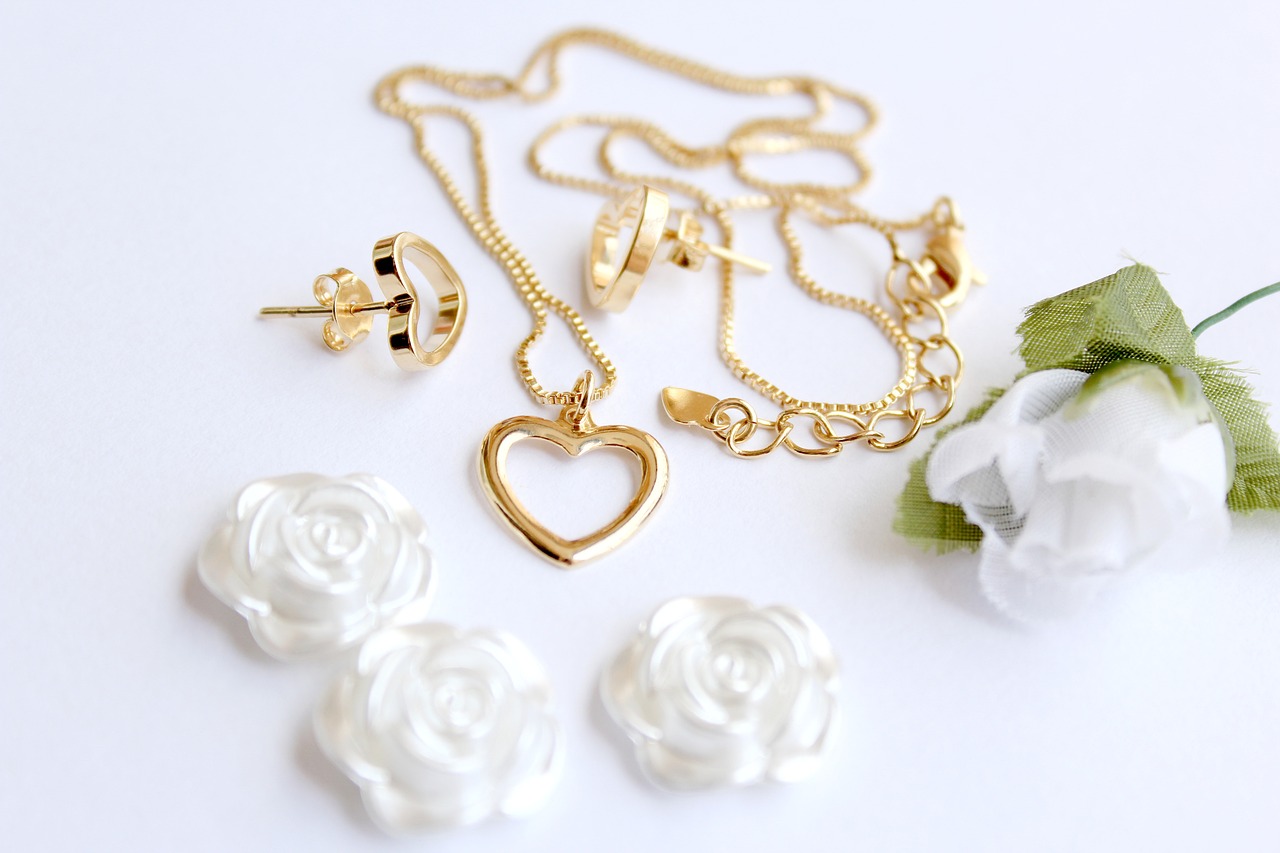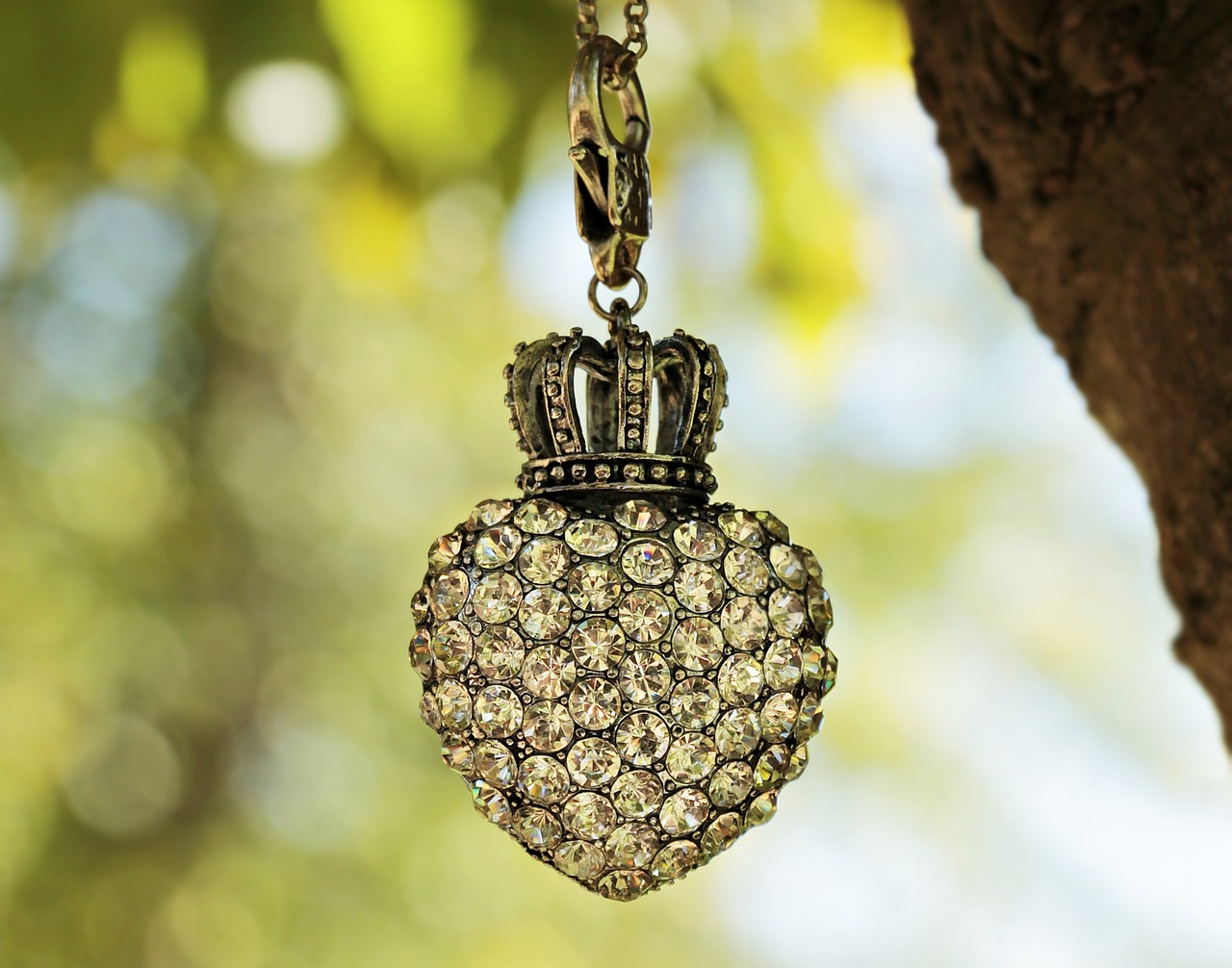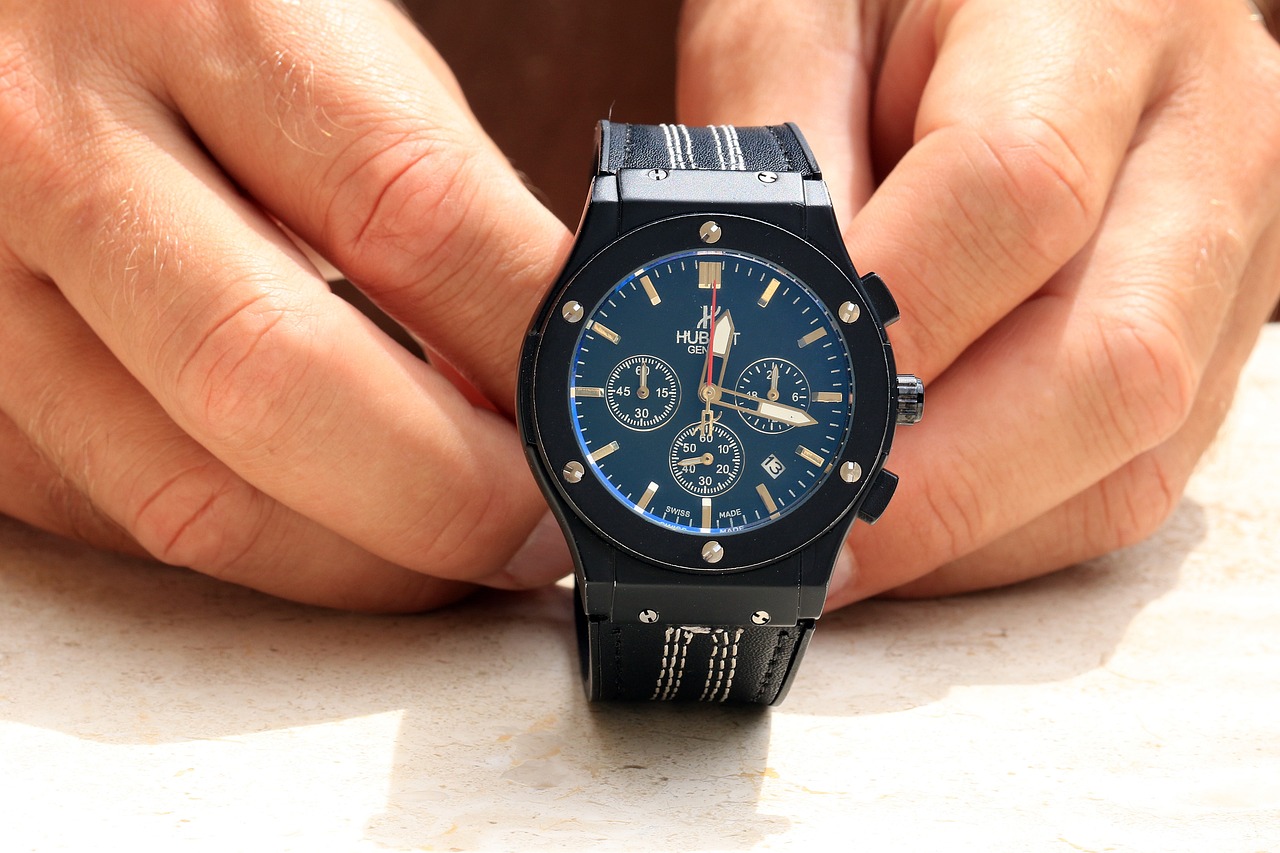Technology and innovation are reshaping the custom jewelry industry, bringing forth a new era of design possibilities, personalization, and production efficiency. As consumer demands evolve, jewelers are leveraging cutting-edge tools and techniques to create unique pieces that resonate with individual tastes. This article delves into the various technological advancements that are transforming the landscape of custom jewelry.
3D printing technology is at the forefront of the jewelry revolution, enabling artisans to produce intricate designs with remarkable speed and precision. This method allows for rapid prototyping, drastically reducing both costs and lead times. Jewelers can now create customized pieces that reflect the unique preferences of their clients, making the process more accessible and efficient.
Computer-Aided Design (CAD) software has become an indispensable tool in modern jewelry design. It empowers designers to create detailed models, visualize their concepts, and make real-time adjustments. This level of creativity and precision enhances the custom jewelry-making process, allowing for the exploration of complex shapes and designs that were once limited by traditional methods.
AR and VR technologies are revolutionizing the way consumers interact with jewelry. These tools facilitate virtual try-ons, allowing customers to visualize how custom pieces will look before making a purchase. This immersive experience not only enhances customer satisfaction but also builds confidence in their buying decisions.
Blockchain technology is making waves in the jewelry supply chain, offering improved transparency and traceability. By verifying the authenticity of materials, blockchain ensures ethical sourcing, which in turn increases consumer trust in custom jewelry. This technology provides a robust framework for tracking the journey of each piece, from raw material to finished product.
AI is transforming the design process by analyzing market trends and predicting consumer preferences. This technology enables jewelers to generate innovative design ideas tailored to their target audience, enhancing the personalization aspect of custom jewelry. As AI continues to evolve, its integration into the design process will likely lead to even more unique and appealing creations.
The push for sustainability is gaining momentum in the jewelry industry. Innovations such as lab-grown diamonds and eco-friendly materials are making custom jewelry more environmentally responsible. These practices not only appeal to conscious consumers but also reflect a growing awareness of the industry’s impact on the planet.
E-commerce platforms are reshaping how consumers purchase custom jewelry. Online marketplaces provide convenience and a broader reach, allowing jewelers to connect with a global audience. Personalized shopping experiences, enhanced by data analytics, enable consumers to discover unique pieces that align with their tastes.
Social media platforms serve as powerful marketing tools for promoting custom jewelry. Influencer marketing has become a key strategy for brands to reach niche markets, showcasing unique designs and increasing visibility among potential customers. This dynamic approach fosters community engagement and brand loyalty.
The emergence of smart jewelry is merging fashion with technology. Wearable pieces that incorporate features like fitness tracking and notifications cater to tech-savvy consumers seeking unique accessories. This integration not only enhances functionality but also opens new avenues for customization.
Looking ahead, the future of custom jewelry is likely to be shaped by advancements in AI, materials science, and consumer engagement strategies. As technology continues to evolve, the industry will adapt to meet the changing needs and preferences of consumers, paving the way for even more innovative creations.

How is 3D Printing Revolutionizing Custom Jewelry?
3D printing technology is rapidly transforming the landscape of the custom jewelry industry, enabling designers to push the boundaries of creativity and innovation. This advanced manufacturing method allows for the creation of intricate designs that were previously difficult or impossible to achieve using traditional techniques. With the ability to produce complex geometries and fine details, jewelers can now offer pieces that are truly unique and tailored to the individual preferences of their clients.
One of the most significant advantages of 3D printing in jewelry making is its ability to facilitate rapid prototyping. This process allows designers to quickly create and test multiple iterations of a design before finalizing it. As a result, jewelers can make real-time adjustments based on client feedback, ensuring that the final product aligns perfectly with the customer’s vision. This speed and flexibility not only enhance the creative process but also significantly reduce the time from concept to completion.
Moreover, the cost-effectiveness of 3D printing cannot be understated. Traditional methods often involve extensive labor and material costs, but 3D printing minimizes waste and streamlines production. By using only the necessary materials to create a piece, jewelers can reduce their overall expenses, which in turn allows them to offer more competitive pricing to consumers. This democratization of custom jewelry means that more people can access personalized pieces without breaking the bank.
In addition to cost savings, 3D printing opens up new avenues for personalization. Customers today seek jewelry that reflects their individual style and story. With 3D printing, jewelers can easily incorporate personal elements into their designs, such as initials, birthstones, or even custom shapes that hold special meaning for the wearer. This level of personalization enhances the emotional connection between the customer and the piece, making it not just an accessory but a treasured keepsake.
Another noteworthy aspect of 3D printing technology is its environmental impact. As sustainability becomes a growing concern for consumers, many jewelers are turning to 3D printing as a more eco-friendly option. By reducing waste and utilizing recycled materials, the jewelry industry can move towards more sustainable practices without compromising on quality or creativity.
As the technology continues to evolve, we can expect even more innovations in the realm of 3D printing for custom jewelry. For instance, advancements in materials science are leading to the development of new, high-performance materials that mimic the look and feel of precious metals and stones. This means that jewelers will have an even broader palette to work with, allowing for greater creativity and expression in their designs.
In summary, 3D printing is revolutionizing the custom jewelry industry in profound ways. By enabling intricate designs, facilitating rapid prototyping, reducing costs, and allowing for greater personalization, this technology is not only meeting but exceeding modern consumer demands. As jewelers embrace these innovations, we can anticipate a future where custom jewelry is more accessible, sustainable, and uniquely expressive than ever before.

What Role Do CAD Programs Play in Jewelry Design?
Computer-Aided Design (CAD) programs have become a cornerstone of modern jewelry design, revolutionizing the way jewelers conceptualize and create their pieces. By leveraging advanced software, designers can enhance their creativity, improve precision, and streamline the entire design process.
CAD software allows jewelry designers to create detailed 3D models of their designs, providing a level of detail that was previously unattainable with traditional methods. This capability enables designers to visualize their concepts in a realistic format, making it easier to spot potential issues before production begins.
With CAD, designers can experiment with various shapes, materials, and settings without the need for physical prototypes. This flexibility encourages creative exploration, allowing designers to push boundaries and innovate. By utilizing tools like parametric design, changes can be made quickly and efficiently, ensuring that designers can iterate on their ideas without significant delays.
Precision is crucial in jewelry design, as even the smallest errors can lead to costly mistakes. CAD software minimizes these risks by providing accurate measurements and detailed specifications. Designers can create intricate patterns and settings that fit perfectly, ensuring that each piece meets the highest standards of quality. This level of detail is particularly important for custom pieces, where personalization is key.
Once a design is finalized in CAD, it can be directly translated into production. This integration with manufacturing processes, such as 3D printing and CNC machining, allows for a seamless transition from design to reality. As a result, production times are significantly reduced, and the risk of errors during the manufacturing phase is minimized. This efficiency not only saves time but also reduces costs associated with material waste.
CAD programs facilitate collaboration among teams, allowing multiple designers to work on a project simultaneously. This collaborative environment fosters innovation and enables designers to share ideas and feedback in real-time. Additionally, clients can be involved in the design process, providing input and making adjustments before the final piece is created. This level of engagement enhances customer satisfaction and ensures that the final product aligns with the client’s vision.
The future of CAD in jewelry design is promising, with advancements in technology continuously shaping the industry. Innovations such as artificial intelligence and machine learning are expected to further enhance design capabilities, allowing for more personalized and intricate designs. As these technologies evolve, they will likely enable designers to create pieces that are not only aesthetically pleasing but also optimized for wearability and durability.
In summary, CAD programs are an essential tool in modern jewelry design, offering numerous benefits that enhance creativity, precision, and efficiency. As technology continues to advance, the role of CAD in the jewelry industry will only grow, paving the way for a new era of design possibilities.
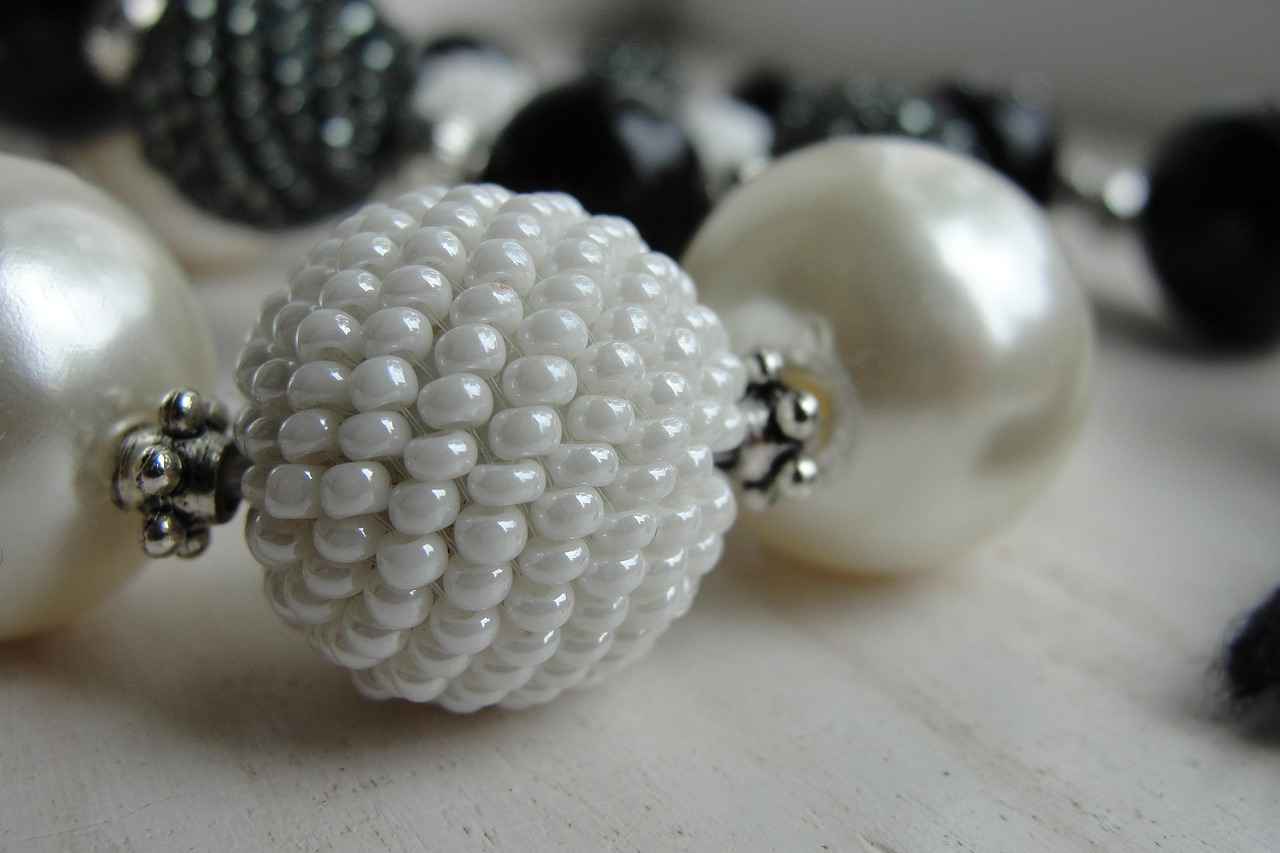
How Are Augmented Reality (AR) and Virtual Reality (VR) Enhancing Customer Experience?
The advent of Augmented Reality (AR) and Virtual Reality (VR) technologies is reshaping the landscape of the jewelry industry, providing consumers with innovative ways to engage with products. These technologies are not just enhancing the shopping experience; they are revolutionizing it by offering unprecedented levels of personalization and interactivity.
- Virtual Try-Ons: One of the most significant advantages of AR technology is the ability to virtually try on jewelry. Customers can use their smartphones or AR glasses to see how different pieces look on them without physically wearing them. This feature helps in making informed purchasing decisions.
- Immersive Experiences: VR can create a fully immersive shopping environment where consumers can explore virtual showrooms. This technology allows users to interact with jewelry pieces in a lifelike setting, enhancing their overall shopping experience.
- Personalization: AR and VR technologies enable jewelers to offer personalized recommendations based on customer preferences and past purchases. This tailored approach increases customer satisfaction and loyalty.
- Enhanced Visualization: With AR, customers can visualize custom designs in real-time. This is particularly beneficial for bespoke jewelry, allowing clients to see how their ideas translate into actual pieces before committing to a purchase.
AR technology overlays digital information onto the real world. For instance, when a customer points their smartphone camera at their hand, the AR app displays various rings or bracelets that they can virtually “try on.” This technology uses facial recognition and depth sensors to ensure accurate placement and scaling of the jewelry.
On the other hand, VR creates a completely immersive environment. Using VR headsets, customers can enter a virtual jewelry store where they can browse collections, interact with sales representatives, and even customize pieces in a 3D space. This level of engagement can significantly enhance the emotional connection between the consumer and the product.
Leading jewelry brands are increasingly adopting AR and VR technologies to stay competitive in a rapidly evolving market. For example, some retailers offer AR apps that allow customers to see how a piece of jewelry looks in different lighting conditions or from various angles. This feature enhances the decision-making process by providing a comprehensive view of the product.
Additionally, brands are investing in VR experiences at trade shows and exhibitions. These immersive setups allow attendees to interact with jewelry in innovative ways, making the experience memorable and engaging. By showcasing their products through VR, brands can differentiate themselves and attract tech-savvy consumers.
The future of AR and VR in the jewelry industry looks promising. As technology continues to advance, we can expect even more sophisticated applications, such as AI-driven virtual stylists that can recommend jewelry based on a user’s style and preferences. Furthermore, as AR and VR become more accessible, smaller jewelry brands will also have the opportunity to leverage these technologies to enhance their customer engagement.
In conclusion, AR and VR technologies are not merely trends; they are fundamental shifts in how consumers interact with jewelry. By offering virtual try-ons, immersive experiences, and personalized recommendations, these technologies are enhancing customer satisfaction and driving sales in the custom jewelry market. As the industry continues to embrace these innovations, consumers can look forward to a more engaging and personalized shopping experience.

What Are the Benefits of Using Blockchain in Jewelry Supply Chains?
Blockchain technology is revolutionizing various industries, and the jewelry sector is no exception. As consumers become increasingly concerned about the origins of their products, the need for transparency and traceability has never been more critical. This innovation not only enhances the supply chain but also builds trust among consumers, particularly in the realm of custom jewelry.
How Does Blockchain Enhance Transparency in Jewelry?
Blockchain operates as a decentralized ledger that records transactions across multiple computers. This technology ensures that once data is entered, it cannot be altered or deleted, providing an immutable record of every transaction. In the jewelry supply chain, this means that every step—from the sourcing of raw materials to the final sale—can be traced and verified. By utilizing blockchain, jewelers can provide detailed information about the journey of each piece, thus enhancing transparency and allowing consumers to make informed choices.
What Role Does Blockchain Play in Verifying Authenticity?
One of the significant challenges in the jewelry industry is the prevalence of counterfeit materials. Blockchain technology offers a solution by allowing for the secure verification of the authenticity of gemstones and precious metals. Each item can be assigned a unique digital identity that records its characteristics, provenance, and ownership history. This level of verification not only protects consumers but also strengthens the reputation of jewelers committed to ethical sourcing.
How Does Blockchain Ensure Ethical Sourcing?
With growing awareness around ethical sourcing, consumers are increasingly seeking assurance that their jewelry is conflict-free and sustainably sourced. Blockchain technology enables jewelers to trace the origins of their materials, ensuring they come from reputable sources. This can significantly enhance a brand’s credibility, as consumers can access verifiable data regarding the ethical practices of their chosen jeweler.
Can Blockchain Increase Consumer Trust in Custom Jewelry?
Trust is a crucial factor in the jewelry industry, especially when it comes to custom pieces that often carry sentimental value. By implementing blockchain technology, jewelers can provide customers with detailed information about the materials used in their custom designs. This transparency fosters a sense of trust, as consumers feel more confident in their purchases knowing that they are supporting ethical and authentic practices.
What Challenges Does Blockchain Face in the Jewelry Industry?
While the benefits of blockchain are substantial, there are challenges to its implementation in the jewelry supply chain. One significant hurdle is the integration of existing systems with blockchain technology. Jewelers must invest in training and infrastructure to adopt this innovative approach effectively. Additionally, the initial costs of implementing blockchain solutions can be a barrier for smaller businesses.
What Future Trends Can We Expect with Blockchain in Jewelry?
As technology continues to evolve, we can expect blockchain to play an even more significant role in the jewelry industry. Innovations such as smart contracts could automate transactions, further enhancing efficiency and security. Additionally, collaborations among jewelers, suppliers, and technology providers will likely lead to more standardized practices, making blockchain adoption more accessible.
In summary, the integration of blockchain technology in the jewelry supply chain offers numerous benefits, including enhanced transparency, authenticity verification, and ethical sourcing. As consumer demand for trustworthy products grows, jewelers who embrace this technology will not only meet modern expectations but also pave the way for a more responsible and transparent industry.
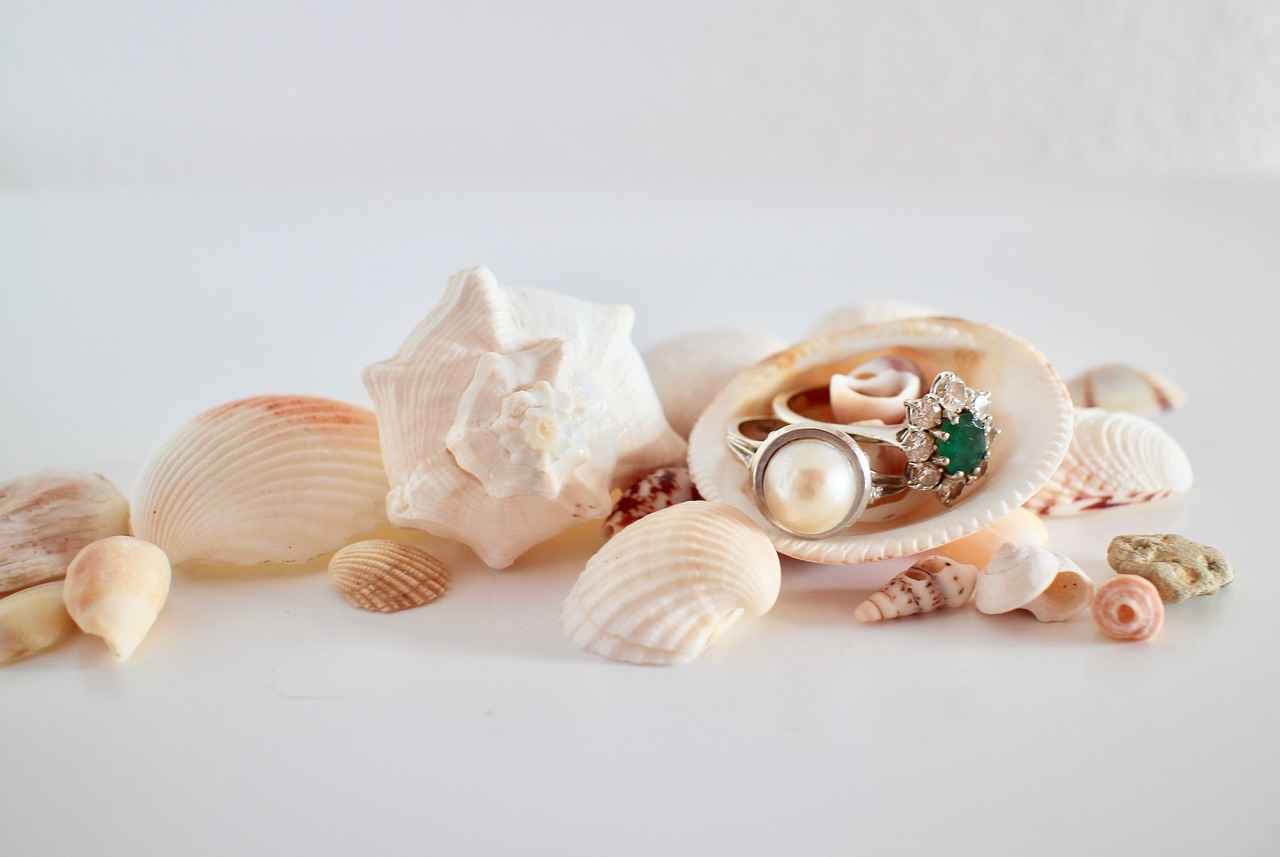
How Is Artificial Intelligence (AI) Shaping Custom Jewelry Design?
Artificial Intelligence (AI) is transforming various industries, and the custom jewelry sector is no exception. By leveraging advanced algorithms and data analysis, AI is reshaping how jewelry designers create, market, and sell their products. This innovative technology is not just enhancing the design process; it is also enabling a deeper connection between jewelers and their clients.
AI tools are capable of analyzing vast amounts of data from market trends and consumer behavior to offer insights that were previously unattainable. By examining patterns in consumer preferences, AI can suggest design elements that are likely to resonate with specific target audiences. This capability allows designers to explore unique styles and create pieces that are not only visually appealing but also aligned with current market demands.
One of the most exciting aspects of AI in custom jewelry design is its ability to predict consumer preferences. By utilizing historical data and machine learning, AI can forecast which styles, colors, and materials will be popular. This predictive capability helps jewelers to stay ahead of trends, allowing them to create pieces that will attract buyers even before they know they want them.
Personalization is a key factor in the success of custom jewelry. AI enables jewelers to offer tailored experiences to their customers. Through data analysis, jewelers can understand individual customer preferences, allowing them to suggest designs that align with personal tastes. This personalized approach not only enhances customer satisfaction but also fosters brand loyalty.
Incorporating AI into the design process significantly reduces the time and effort required to create new jewelry pieces. AI-driven software can automate repetitive tasks, such as rendering designs and generating 3D models. This efficiency allows designers to focus on the creative aspects of their work while ensuring that the production process is both efficient and cost-effective.
AI can also generate design ideas based on input parameters provided by the jeweler. For instance, a designer can input specific themes, colors, or styles, and the AI will produce a variety of design options. This not only sparks creativity but also provides a wealth of ideas that may not have been considered otherwise. Furthermore, it allows for rapid prototyping, enabling jewelers to test concepts before committing to production.
AI is revolutionizing marketing strategies within the custom jewelry industry. By analyzing consumer data, AI can help jewelers identify target demographics and tailor marketing campaigns accordingly. This targeted approach ensures that promotional efforts reach the right audience, increasing the likelihood of sales. Additionally, AI can optimize pricing strategies by analyzing competitor pricing and consumer willingness to pay.
While AI offers numerous advantages, it also raises ethical questions regarding creativity and originality. The reliance on AI-generated designs can lead to concerns about the authenticity of jewelry pieces. Jewelers must balance the use of technology with their unique artistic vision to maintain the integrity of their work. Additionally, it is crucial to ensure that AI systems are trained on diverse datasets to avoid bias in design recommendations.
In conclusion, AI is undeniably shaping the future of custom jewelry design. By enhancing creativity, predicting consumer preferences, and streamlining processes, this technology provides jewelers with the tools they need to thrive in a competitive market. As the industry continues to evolve, embracing AI will be essential for those looking to innovate and connect with their customers effectively.

What Innovations Are Emerging in Sustainable Jewelry Production?
Sustainable practices are becoming increasingly important in the jewelry industry as consumers become more environmentally conscious. This shift is leading to innovative solutions that not only reduce the ecological footprint of jewelry production but also cater to a growing market of ethical consumers. As a result, the demand for eco-friendly materials and sustainable production methods is on the rise.
One of the most significant innovations in sustainable jewelry production is the advent of lab-grown diamonds. These diamonds are created in controlled environments, mimicking the natural processes that form diamonds in the earth. The benefits of lab-grown diamonds include:
- Environmental Impact: Lab-grown diamonds require significantly less energy and water compared to traditional diamond mining, which often leads to habitat destruction and pollution.
- Ethical Sourcing: By eliminating the need for mining, lab-grown diamonds reduce the risk of conflict diamonds entering the market, ensuring that consumers can purchase jewelry with a clear conscience.
- Cost-Effectiveness: Lab-grown diamonds are generally more affordable than their mined counterparts, allowing consumers to purchase larger or higher-quality stones for the same price.
In addition to lab-grown diamonds, the use of eco-friendly materials is reshaping the landscape of custom jewelry. Designers are increasingly turning to recycled metals, ethically sourced gemstones, and sustainable materials such as:
- Bamboo: A renewable resource, bamboo is being used in jewelry design for its unique aesthetic and minimal environmental impact.
- Recycled Gold and Silver: Using reclaimed metals reduces the need for mining and helps to minimize waste, making it a popular choice among eco-conscious jewelers.
- Biodegradable Materials: Innovations in biodegradable plastics and organic materials are also emerging, allowing for jewelry that is both stylish and sustainable.
As consumers become more educated about the environmental and ethical implications of their purchases, awareness is driving demand for sustainable jewelry options. Brands that prioritize sustainability are gaining a competitive edge by:
- Transparency: Providing detailed information about sourcing and production practices helps build trust with consumers.
- Storytelling: Sharing the story behind each piece, including the materials used and the artisans involved, resonates with consumers looking for meaningful purchases.
Technology also plays a crucial role in promoting sustainability in the jewelry industry. Innovations such as 3D printing and CAD software enable jewelers to create designs with minimal waste. Additionally, advancements in supply chain tracking, such as blockchain technology, allow consumers to verify the ethical sourcing of materials.
The future of sustainable jewelry production looks promising, with ongoing research and development aimed at further reducing the industry’s environmental impact. Expect to see:
- New Materials: Continued exploration of sustainable materials, including lab-created alternatives to precious stones.
- Enhanced Recycling Methods: Innovations in recycling technology that make it easier to reclaim and reuse materials from old jewelry.
- Consumer Engagement: Increased use of digital platforms to educate consumers about sustainability and the impact of their choices.
In summary, sustainable practices are not just a trend; they are becoming an integral part of the jewelry industry. As innovations such as lab-grown diamonds and eco-friendly materials gain traction, the market is evolving to meet the demands of conscious consumers. This shift not only benefits the environment but also enriches the jewelry experience by offering unique, ethically produced pieces.

How Are E-commerce Platforms Transforming Custom Jewelry Sales?
E-commerce platforms are significantly transforming the landscape of custom jewelry sales, making it easier for consumers to find and purchase unique pieces that reflect their personal style. The rise of online marketplaces has created a dynamic shift in the way jewelers operate, allowing them to reach a wider audience than ever before.
One of the most notable advantages of e-commerce is the convenience it offers. Customers can browse through an extensive range of custom jewelry options from the comfort of their own homes, eliminating the need to visit multiple physical stores. This accessibility means that consumers can easily compare designs, prices, and customer reviews, leading to more informed purchasing decisions.
Moreover, e-commerce platforms enable jewelers to showcase their creations on a global scale. By leveraging online marketplaces, artisans can connect with customers from different regions, expanding their reach beyond local markets. This broader audience not only increases sales potential but also fosters a diverse customer base that appreciates unique and handcrafted jewelry.
Another significant aspect of e-commerce is the ability to provide personalized shopping experiences. Many platforms utilize advanced algorithms and customer data to recommend products tailored to individual preferences. For instance, if a customer frequently searches for vintage-style rings, the platform can highlight similar pieces, enhancing the likelihood of a purchase. This level of personalization not only improves customer satisfaction but also builds brand loyalty.
Furthermore, e-commerce platforms often incorporate user-generated content, such as customer reviews and photos, which can significantly influence purchasing decisions. Shoppers are more likely to trust the opinions of fellow consumers over traditional advertising methods. This social proof is invaluable in the jewelry market, where buyers seek assurance about the quality and authenticity of their purchases.
In addition, the integration of technologies like Augmented Reality (AR) allows customers to visualize how a piece of jewelry will look on them before making a purchase. This interactive experience reduces the uncertainty often associated with online shopping, leading to higher conversion rates. Customers can virtually try on rings, necklaces, or bracelets, ensuring that they are making the right choice.
Moreover, e-commerce platforms provide jewelers with valuable analytics and insights into consumer behavior. By tracking sales trends and customer preferences, jewelers can adapt their marketing strategies and product offerings to better align with market demands. This data-driven approach enables them to stay competitive in a rapidly evolving industry.
With the rise of social media, e-commerce platforms are also becoming integrated marketing tools. Jewelers can promote their products through visually appealing posts on platforms like Instagram and Pinterest, driving traffic to their online stores. Influencer partnerships further amplify this reach, allowing brands to tap into niche markets and showcase their unique designs to a broader audience.
In conclusion, e-commerce platforms are revolutionizing the custom jewelry industry by providing convenience, personalization, and extensive reach. As technology continues to advance, the potential for further innovation in the online jewelry market remains vast. Jewelers who embrace these changes will not only enhance their sales but also create meaningful connections with consumers worldwide.
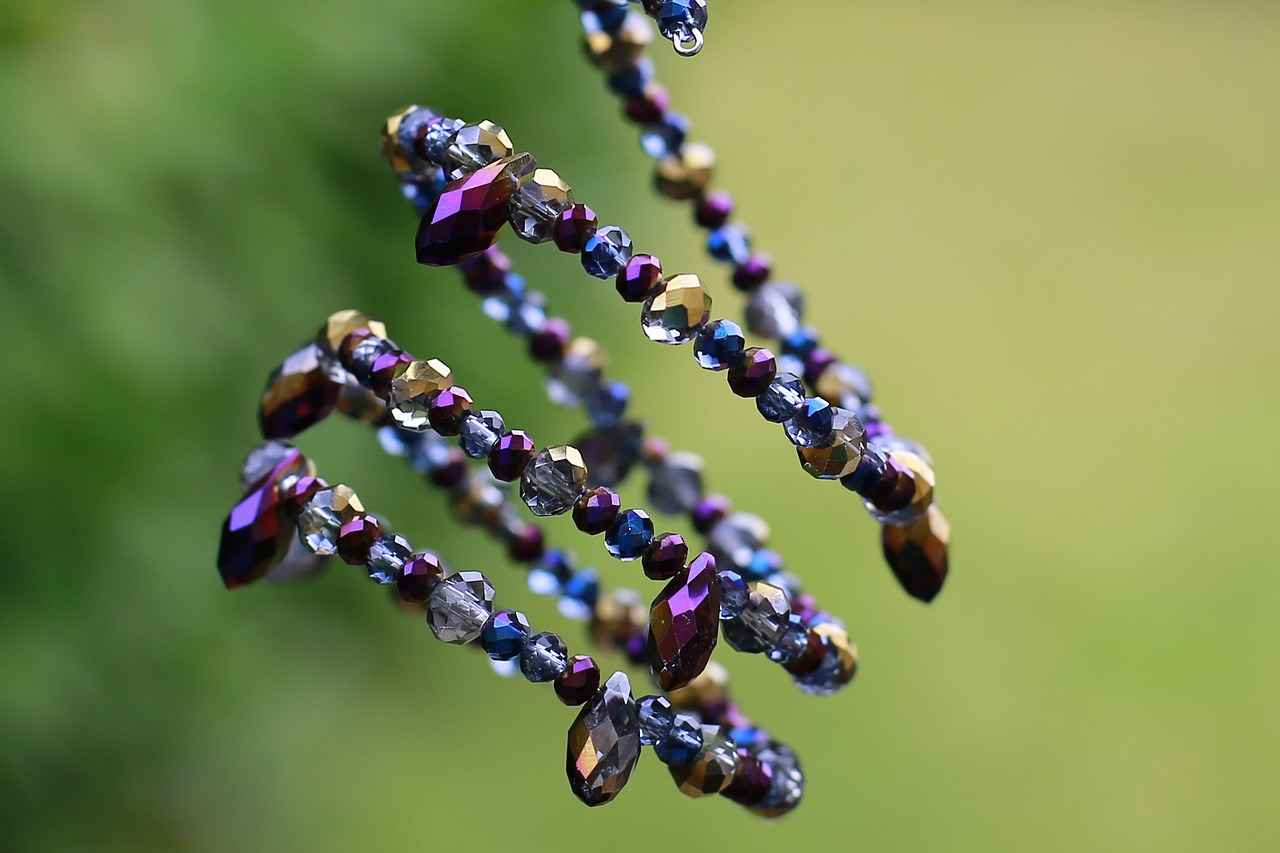
What Impact Do Social Media and Influencer Marketing Have on Custom Jewelry?
In today’s digital age, social media has become an essential component of marketing strategies across various industries, including the custom jewelry sector. With platforms like Instagram, Facebook, and TikTok, brands can connect with potential customers in ways that were previously unimaginable. This article explores the profound impact of social media and influencer marketing on custom jewelry, highlighting how these tools enhance brand visibility and drive sales.
Social media platforms serve as a visual showcase for custom jewelry brands, allowing them to display their unique designs to a global audience. Through high-quality images and engaging videos, brands can tell their stories and emphasize the craftsmanship behind each piece. The use of hashtags related to jewelry and fashion helps reach niche markets, connecting with consumers who are specifically interested in custom designs.
Influencer marketing has emerged as a powerful strategy for custom jewelry brands looking to expand their reach. By partnering with influencers who resonate with their target audience, brands can leverage the influencer’s credibility and loyal following. Influencers showcase jewelry pieces in authentic settings, making them more relatable to potential buyers. This approach not only increases brand awareness but also fosters trust and encourages purchases.
User-generated content (UGC) is another significant aspect of social media marketing for custom jewelry. When customers share photos of their purchases, it creates a sense of community and authenticity. Positive reviews and testimonials act as social proof, further influencing potential buyers. Brands can encourage UGC by hosting contests or featuring customer photos on their profiles, enhancing engagement and loyalty.
Social media platforms offer advanced targeting options that allow custom jewelry brands to reach specific demographics. Brands can tailor their advertisements based on interests, behaviors, and location, ensuring that their marketing efforts are directed towards the most relevant audience. This targeted approach maximizes the effectiveness of advertising campaigns, leading to higher conversion rates.
While partnering with high-profile influencers can be beneficial, collaborating with micro-influencers—those with smaller but highly engaged followings—can yield impressive results for custom jewelry brands. Micro-influencers often have a more personal connection with their audience, making their endorsements feel more genuine. This can lead to increased engagement and a higher likelihood of followers making a purchase based on the influencer’s recommendation.
Social media trends can significantly influence the types of designs that gain popularity within the custom jewelry market. Brands that actively monitor trends can quickly adapt their offerings to meet consumer preferences. For example, if a particular style or gemstone becomes trending on platforms like TikTok, brands can respond by creating similar pieces, ensuring they remain relevant and appealing to their audience.
- Interactive Content: Polls, quizzes, and Q&A sessions can engage followers and encourage interaction.
- Behind-the-Scenes Content: Sharing the design process or materials used can create a deeper connection with the audience.
- Live Streaming: Hosting live sessions to showcase new collections or answer questions can foster real-time engagement.
In summary, the impact of social media and influencer marketing on custom jewelry is undeniable. By leveraging these platforms, brands can enhance their visibility, build trust, and ultimately drive sales. As the landscape of social media continues to evolve, so too will the strategies that custom jewelry brands employ to connect with their audiences.

How Are Smart Technologies Integrating with Jewelry?
Smart technologies are rapidly becoming an integral part of the jewelry industry, transforming traditional pieces into multifunctional accessories. As consumers increasingly seek out unique and personalized items, the demand for innovative designs that incorporate technology is on the rise. This trend not only enhances the aesthetic appeal of jewelry but also adds significant functionality, making it appealing to a broader audience.
Smart jewelry refers to wearable devices that combine the elegance of traditional jewelry with advanced technology. These pieces often feature fitness tracking, notification alerts, and even health monitoring capabilities. For instance, smart rings and bracelets can track physical activity, monitor heart rates, or provide notifications for calls and messages, all while maintaining a stylish appearance.
By integrating technology into jewelry, manufacturers are able to offer a more personalized experience. Smart jewelry can be customized to suit individual preferences, allowing users to select specific functionalities that align with their lifestyles. For example, a fitness enthusiast may prefer a piece that focuses on health metrics, while someone who is always on the go might prioritize notification features. This level of customization not only enhances user satisfaction but also fosters a deeper emotional connection to the product.
- Bluetooth Connectivity: Many smart jewelry pieces use Bluetooth to connect to smartphones, enabling seamless notifications and data sharing.
- Health Sensors: Advanced sensors can monitor vital signs, track sleep patterns, and even detect stress levels.
- GPS Technology: Some smart jewelry includes GPS for location tracking, providing safety features for users.
- Touch Technology: Many pieces have touch-sensitive controls, allowing users to interact with their devices easily.
Leading brands in the jewelry industry are continuously innovating to stay ahead of consumer demands. Companies like Oura and Bellabeat have successfully launched smart rings and necklaces that not only track health metrics but also serve as fashionable accessories. These brands focus on creating products that blend seamlessly into everyday life, ensuring that technology does not compromise style.
The market for smart jewelry is projected to grow significantly in the coming years. As technology advances and consumer awareness increases, more individuals are likely to invest in smart accessories. The appeal lies in the combination of fashion and functionality, making smart jewelry a desirable choice for tech-savvy consumers who want to express their personal style while enjoying the benefits of modern technology.
Smart jewelry plays a crucial role in promoting health and wellness by providing users with valuable insights into their physical activity and overall well-being. For instance, certain pieces can remind users to stay active, monitor hydration levels, and even track menstrual cycles. This proactive approach to health management is gaining traction among consumers who prioritize wellness in their daily lives.
Despite its growing popularity, smart jewelry faces several challenges. Battery life remains a significant concern, as many consumers prefer accessories that do not require frequent charging. Additionally, ensuring data privacy is paramount, as users become increasingly aware of the need to protect their personal information. Brands must address these challenges to build trust and ensure long-term success in the market.
In conclusion, smart technologies are revolutionizing the jewelry industry by merging style with innovation. As more consumers seek personalized and functional accessories, the future of smart jewelry looks promising, paving the way for exciting developments that cater to modern lifestyles.

What Future Trends Can We Expect in Custom Jewelry Technology?
The custom jewelry industry is on the brink of a significant transformation, driven by rapid advancements in technology and changing consumer preferences. As we look to the future, several key trends are emerging that will shape the way custom jewelry is designed, produced, and sold. This article delves into these trends, focusing on the role of artificial intelligence, materials science, and innovative consumer engagement strategies.
Artificial intelligence is poised to revolutionize the custom jewelry landscape. By leveraging vast amounts of data, AI can analyze consumer behavior, identify emerging trends, and even suggest design modifications. This capability allows jewelers to create pieces that resonate deeply with individual customers. For instance, AI-driven design tools can generate unique styles based on user preferences, leading to a more personalized shopping experience.
The future of custom jewelry will also be influenced by advancements in materials science. Innovations such as lab-grown diamonds and new composite materials are making it possible to create stunning pieces that are both ethical and sustainable. These materials not only reduce environmental impact but also offer consumers a wider range of choices, catering to diverse tastes and preferences.
As technology continues to evolve, so too will the strategies used to engage consumers. The integration of augmented reality (AR) will allow customers to virtually try on jewelry from the comfort of their homes. This immersive experience not only enhances customer satisfaction but also reduces return rates. Additionally, brands will increasingly rely on social media and influencer partnerships to create authentic connections with their audience, showcasing unique designs and fostering brand loyalty.
With a growing emphasis on sustainability, the custom jewelry industry is expected to embrace innovative practices that prioritize ethical sourcing and production. The rise of eco-friendly materials and transparent supply chains will appeal to environmentally conscious consumers. Brands that prioritize sustainability will likely gain a competitive edge, as consumers increasingly seek out products that align with their values.
The shift towards e-commerce is transforming how consumers shop for custom jewelry. Online platforms provide unparalleled convenience and access to a global market. Jewelers can showcase their designs through high-quality imagery and virtual experiences, making it easier for customers to find exactly what they want. Moreover, personalized recommendations based on browsing history will enhance the shopping experience, making it more engaging and tailored.
The integration of smart technologies into jewelry design is another trend to watch. From fitness trackers to notifications, smart jewelry merges functionality with style, appealing to tech-savvy consumers. This trend not only enhances the utility of jewelry but also opens up new avenues for design, allowing for creative expressions that resonate with modern lifestyles.
In conclusion, the future of custom jewelry is bright, characterized by technological advancements and innovative practices that cater to the evolving needs of consumers. As the industry embraces AI, sustainable materials, and enhanced consumer engagement strategies, it is set to redefine the way people perceive and purchase jewelry. The possibilities are endless, and those who adapt to these changes will thrive in the dynamic landscape of custom jewelry.
Frequently Asked Questions
- How does 3D printing impact custom jewelry design?
3D printing is a game-changer! It allows jewelers to create intricate designs quickly and affordably. Imagine being able to bring your unique vision to life in just a fraction of the time it used to take!
- What advantages do CAD programs offer to jewelry designers?
CAD programs are like magic wands for designers! They help in crafting detailed models, visualizing concepts, and making real-time tweaks. This means more creativity and precision in creating custom pieces that truly shine.
- How are AR and VR transforming the shopping experience for customers?
AR and VR are revolutionizing how we shop for jewelry! With these technologies, customers can virtually try on pieces, making the experience immersive and fun. It’s like having a personal jewelry store right at your fingertips!
- What role does blockchain play in the jewelry supply chain?
Blockchain enhances transparency and trust in the jewelry supply chain. It verifies the authenticity of materials, ensuring ethical sourcing. This means you can wear your custom piece with pride, knowing it’s ethically made!
- How is AI influencing custom jewelry design?
AI is like having a design partner that knows trends! It analyzes preferences and generates ideas, helping jewelers create pieces that resonate with customers. This means more personalized jewelry that fits your style perfectly.
- What innovations are being made in sustainable jewelry production?
Sustainable practices are on the rise! Innovations like lab-grown diamonds and eco-friendly materials are making custom jewelry more responsible. It’s a win-win for the planet and for those who want to wear their values.
- How are e-commerce platforms changing the way we buy custom jewelry?
E-commerce is reshaping the jewelry landscape! Online platforms provide convenience and personalized experiences, allowing jewelers to connect with a global audience. Shopping for custom pieces has never been easier!
- What impact does social media have on custom jewelry brands?
Social media is a powerful marketing tool! It helps brands reach niche markets through influencer partnerships, showcasing unique designs and boosting visibility. It’s like having a megaphone for your beautiful creations!
- How are smart technologies being integrated into jewelry?
Smart jewelry is the future! It combines fashion with functionality, incorporating tech like fitness tracking. This caters to tech-savvy consumers who want accessories that do more than just look good.
- What future trends should we expect in custom jewelry technology?
The future looks bright! Expect advancements in AI, materials science, and consumer engagement strategies. As technology evolves, the jewelry industry will keep adapting to meet your changing needs and preferences.

